1 apr 2018
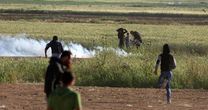
Great March of Return's legal committee on Saturday said that the Israeli occupation army's violent quelling of peaceful demonstrations in Gaza is a war crime that requires holding Israel's leaders accountable before the International Criminal Court.
During a press conference in Gaza, the committee expressed its deep concern over the Israeli attack on the peaceful Return March which is scheduled to be launched in the West Bank too and to continue until 15th May.
The committee warned of the repercussions of the international and Arab silence vis-à-vis the Israeli crimes against peaceful protesters which would lead to an increase in the number of victims.
The committee affirmed that it is exerting every possible effort to contact with local and international human rights organizations as well as experts in international law to hold Israel's leaders accountable for their crimes against defenseless civilians.
It also called for establishing a fact-finding committee from the UN Human Rights Council to investigate into the massacre committed against the Palestinians marching peacefully for their right of return in Gaza.
During a press conference in Gaza, the committee expressed its deep concern over the Israeli attack on the peaceful Return March which is scheduled to be launched in the West Bank too and to continue until 15th May.
The committee warned of the repercussions of the international and Arab silence vis-à-vis the Israeli crimes against peaceful protesters which would lead to an increase in the number of victims.
The committee affirmed that it is exerting every possible effort to contact with local and international human rights organizations as well as experts in international law to hold Israel's leaders accountable for their crimes against defenseless civilians.
It also called for establishing a fact-finding committee from the UN Human Rights Council to investigate into the massacre committed against the Palestinians marching peacefully for their right of return in Gaza.
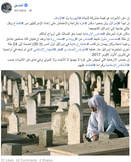
COGAT Mordechai's Facebook post
While Palestinian officials, Turkey and Iran accuse Israel of 'brutally massacring' peaceful protesters, IDF says most killed in Friday's border clashes were in fact terrorists; Masab Salul, a member of Hamas's military wing, and Mohammed Rabaya killed after opening fire at IDF soldiers from Gaza border; Israel says it has their bodies.
Israel holds the bodies of two of the terrorists who opened fire at IDF forces on Friday in the northern Gaza Strip, it was reported by Al-Hayat and confirmed by outgoing Coordinator of Government Activities in the Territories Maj. Gen. Yoav Mordechai on Sunday.
Masab Salul, 23, a resident of Az-Zawayda and a member of Hamas's military wing, shot at IDF soldiers on the other side of the border along with Mohammed Rabaya.
The troops responded with gunfire at the terrorists and tank and aircraft fire at Hamas and Islamic Jihad observation positions in the north and south of the Gaza Strip.
"A common value in Judaism and Islam is to bury the dead," Mordechai noted in a Facebook post in Arabic, saying Israel does not intend to return the bodies of the two until Israelis held by Hamas, both deceased and alive, are returned to their families.
"Israel will not rest and the residents of Gaza will not know peace until the Israelis are returned from the Gaza Strip and our soldiers will be brought for burial in Israel," he threatened, saying the bodies of the two terrorists now join those captured in operation protective edge and the October 2017 detonation of a terror tunnel on the Gaza border, totaling 24 in number.
Mordechai then directly addressed the residents of Gaza, telling them Hamas is robbing them of their right to bury their dead. "The Hamas terror organization that controls Gaza does not care either about the living nor about the dead, it prevents their proper Islamic burial," He accused.
Simcha Goldin, the father of fallen IDF soldier Lt. Hadar Goldin, whose body is still being held by Hamas, said Israel should keep the two's bodies as leverage.
"Israel must use the bodies as a bargaining chip … and hold them until a solution is found and our soldiers' (bodies) are returned," he said.
Salul's family said they learned of his death when they saw his photo in Palestinian media.
While there were reports of the funerals of 15 other Palestinians killed on Friday in clashes on the border as part of the "March of Return," there were no reports of Salul's funeral. Hamas and its military wing, the Izz ad-Din al-Qassam, made no comment on the matter.
A Palestinian source in Gaza claimed the body of the second terrorist who carried out the shooting attack is also being held by Israel.
The IDF said Saturday that at least ten Palestinians out of the 16 killed by Israeli gunfire on the Gaza border Friday were terrorist, eight of which were members of Hamas, which said earlier that day only five of which were its members.
The IDF’s Arabic-language spokesperson, Avichay Adraee, provided details on each terrorist killed via Twitter, showing that while five were indeed from the Sunni terror organization's military wing, several members of the organization and other jihadists were omitted from their statement.
While Palestinian officials, Turkey and Iran accuse Israel of 'brutally massacring' peaceful protesters, IDF says most killed in Friday's border clashes were in fact terrorists; Masab Salul, a member of Hamas's military wing, and Mohammed Rabaya killed after opening fire at IDF soldiers from Gaza border; Israel says it has their bodies.
Israel holds the bodies of two of the terrorists who opened fire at IDF forces on Friday in the northern Gaza Strip, it was reported by Al-Hayat and confirmed by outgoing Coordinator of Government Activities in the Territories Maj. Gen. Yoav Mordechai on Sunday.
Masab Salul, 23, a resident of Az-Zawayda and a member of Hamas's military wing, shot at IDF soldiers on the other side of the border along with Mohammed Rabaya.
The troops responded with gunfire at the terrorists and tank and aircraft fire at Hamas and Islamic Jihad observation positions in the north and south of the Gaza Strip.
"A common value in Judaism and Islam is to bury the dead," Mordechai noted in a Facebook post in Arabic, saying Israel does not intend to return the bodies of the two until Israelis held by Hamas, both deceased and alive, are returned to their families.
"Israel will not rest and the residents of Gaza will not know peace until the Israelis are returned from the Gaza Strip and our soldiers will be brought for burial in Israel," he threatened, saying the bodies of the two terrorists now join those captured in operation protective edge and the October 2017 detonation of a terror tunnel on the Gaza border, totaling 24 in number.
Mordechai then directly addressed the residents of Gaza, telling them Hamas is robbing them of their right to bury their dead. "The Hamas terror organization that controls Gaza does not care either about the living nor about the dead, it prevents their proper Islamic burial," He accused.
Simcha Goldin, the father of fallen IDF soldier Lt. Hadar Goldin, whose body is still being held by Hamas, said Israel should keep the two's bodies as leverage.
"Israel must use the bodies as a bargaining chip … and hold them until a solution is found and our soldiers' (bodies) are returned," he said.
Salul's family said they learned of his death when they saw his photo in Palestinian media.
While there were reports of the funerals of 15 other Palestinians killed on Friday in clashes on the border as part of the "March of Return," there were no reports of Salul's funeral. Hamas and its military wing, the Izz ad-Din al-Qassam, made no comment on the matter.
A Palestinian source in Gaza claimed the body of the second terrorist who carried out the shooting attack is also being held by Israel.
The IDF said Saturday that at least ten Palestinians out of the 16 killed by Israeli gunfire on the Gaza border Friday were terrorist, eight of which were members of Hamas, which said earlier that day only five of which were its members.
The IDF’s Arabic-language spokesperson, Avichay Adraee, provided details on each terrorist killed via Twitter, showing that while five were indeed from the Sunni terror organization's military wing, several members of the organization and other jihadists were omitted from their statement.
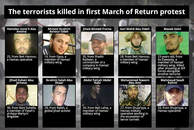
1. Masab Salul, 23 years old, from Az-Zawayda, a member of Hamas's military wing. Shot by the IDF after firing at Israeli forces alongside another terrorist.
2. Sari Walid Abu Odeh, 28, from Beit Hanoun, a member of Hamas's military wing.
3. Jihad Ahmed Fraina, 35, from Sheikh Radwan, a commander of a company in Hamas's military wing.
4. Ahmed Ibrahim Ashour Odeh, 19, from Gaza, a member of Hamas's military wing.
5. Hamdan Isma'il Abu Amsha, 25, from Beit Hanoun, a Hamas operative.
6. Mahmoud Saadi Rahmi, 33, from Shuja'iyya, a Hamas operative.
7. Mohammed Naeem Abu Amr, 27, from Shuja'iyya, a Hamas military operative working in the excavation of terror tunnels.
8. Abdel Fattah Abdel Nabi, 20, from Beit Lahia, a member of Hamas's military wing. Caught on camera being shot in the back by an Israeli sniper, footage the IDF alluded to being "edited and fabricated."
9. Ibrahim Salah Abu Shaar, 29, from Rafah, a global jihad activist.
10. Jihad Zuhair Abu Jamous, 30, from Bani Suheila, a member of Fatah's al-Aqsa Martyrs' Brigades.
Despite this, in view of past precedents, it is quite possible that the findings of the investigations of Friday's events, alongside footage and testimonies from Gaza, may lead to the opening of a Military Police investigation into some of the deaths.
Operational investigations of this nature have not been objected to in principle or criticized by military commanders in the IDF's Gaza Division, primarily because of their importance as an additional internal inspection tool for the conduct of the forces and for promoting international legitimacy.
As part of it, the IDF is looking into whether any of the other Palestinians shot dead Friday were terrorists as well and into the exact circumstances of their deaths.
One such person was Bader al-Sabbagh, 20. The IDF did not list him on the list of the ten terrorists.
His brother Muhammad, 30, told the British daily The Guardian that he had seen Bader die. "He said, 'I'm bored, I'm fed up with this life,'" he recounted. "He asked me for a cigarette, took two puffs, and then a bullet hit him in the head. I carried him to the ambulance, but he died."
According to him, the two stood between the group of protesters who threw stones at IDF forces and the demonstrators at the back, where thousands of women, men and children gathered.
"He did not do anything, he just stood next to me," Muhammad claimed.
Land Day is just the first in several incendiary events likely to spark further violence in the coming weeks, culminating in Nakba Day, commemorated on May 15—the anniversary of Israel’s establishment, known to Palestinians as "the Nakba," or catastrophe.
Another, the Palestinian Prisoners' Day, in which Palestinians express solidarity with Palestinian prisoners incarcerated in Israel and their families, is commemorated annually on April 17, the date in which the first Palestinian security prisoner was released in a prisoner exchange deal in 1974.
As in recent protests, demonstrators are expected to congregate near Ramallah, Hebron, Nablus and other Palestinian towns and villages. There, too, serious confrontations with Israeli security forces may lead to casualties.
On Saturday the confrontations were much less intense and ended with 25 Palestinian lightly-to-moderately injured.
In contrast, on Friday, hundreds of Palestinians were injured, aside from the 16 who were killed. Al-Shifa Hospital in the Gaza Strip said that 284 wounded were treated that day, most of them from shooting.
A spokesperson for the hospital claimed that 70 of them were girls aged 11-18.
In the coming days, the confrontations on the border are expected to continue at a lower rate during the week and to intensify on Fridays after noon prayers. In any case, it is estimated that the number of people in future demonstrators leading to Nakba Day will not approach the 30 thousand who congregated last Friday.
The protest tents erected in five locations on the Israel-Gaza border are set to stay occupied throughout.
2. Sari Walid Abu Odeh, 28, from Beit Hanoun, a member of Hamas's military wing.
3. Jihad Ahmed Fraina, 35, from Sheikh Radwan, a commander of a company in Hamas's military wing.
4. Ahmed Ibrahim Ashour Odeh, 19, from Gaza, a member of Hamas's military wing.
5. Hamdan Isma'il Abu Amsha, 25, from Beit Hanoun, a Hamas operative.
6. Mahmoud Saadi Rahmi, 33, from Shuja'iyya, a Hamas operative.
7. Mohammed Naeem Abu Amr, 27, from Shuja'iyya, a Hamas military operative working in the excavation of terror tunnels.
8. Abdel Fattah Abdel Nabi, 20, from Beit Lahia, a member of Hamas's military wing. Caught on camera being shot in the back by an Israeli sniper, footage the IDF alluded to being "edited and fabricated."
9. Ibrahim Salah Abu Shaar, 29, from Rafah, a global jihad activist.
10. Jihad Zuhair Abu Jamous, 30, from Bani Suheila, a member of Fatah's al-Aqsa Martyrs' Brigades.
Despite this, in view of past precedents, it is quite possible that the findings of the investigations of Friday's events, alongside footage and testimonies from Gaza, may lead to the opening of a Military Police investigation into some of the deaths.
Operational investigations of this nature have not been objected to in principle or criticized by military commanders in the IDF's Gaza Division, primarily because of their importance as an additional internal inspection tool for the conduct of the forces and for promoting international legitimacy.
As part of it, the IDF is looking into whether any of the other Palestinians shot dead Friday were terrorists as well and into the exact circumstances of their deaths.
One such person was Bader al-Sabbagh, 20. The IDF did not list him on the list of the ten terrorists.
His brother Muhammad, 30, told the British daily The Guardian that he had seen Bader die. "He said, 'I'm bored, I'm fed up with this life,'" he recounted. "He asked me for a cigarette, took two puffs, and then a bullet hit him in the head. I carried him to the ambulance, but he died."
According to him, the two stood between the group of protesters who threw stones at IDF forces and the demonstrators at the back, where thousands of women, men and children gathered.
"He did not do anything, he just stood next to me," Muhammad claimed.
Land Day is just the first in several incendiary events likely to spark further violence in the coming weeks, culminating in Nakba Day, commemorated on May 15—the anniversary of Israel’s establishment, known to Palestinians as "the Nakba," or catastrophe.
Another, the Palestinian Prisoners' Day, in which Palestinians express solidarity with Palestinian prisoners incarcerated in Israel and their families, is commemorated annually on April 17, the date in which the first Palestinian security prisoner was released in a prisoner exchange deal in 1974.
As in recent protests, demonstrators are expected to congregate near Ramallah, Hebron, Nablus and other Palestinian towns and villages. There, too, serious confrontations with Israeli security forces may lead to casualties.
On Saturday the confrontations were much less intense and ended with 25 Palestinian lightly-to-moderately injured.
In contrast, on Friday, hundreds of Palestinians were injured, aside from the 16 who were killed. Al-Shifa Hospital in the Gaza Strip said that 284 wounded were treated that day, most of them from shooting.
A spokesperson for the hospital claimed that 70 of them were girls aged 11-18.
In the coming days, the confrontations on the border are expected to continue at a lower rate during the week and to intensify on Fridays after noon prayers. In any case, it is estimated that the number of people in future demonstrators leading to Nakba Day will not approach the 30 thousand who congregated last Friday.
The protest tents erected in five locations on the Israel-Gaza border are set to stay occupied throughout.
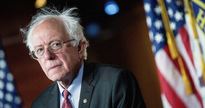
US senator Bernie Sanders on Sunday denounced the Israeli army's killing of Palestinian demonstrators during Gaza's Great March of Return on Friday.
Sanders wrote on Twitter, "The killing of Palestinian demonstrators by Israeli forces in Gaza is tragic. It is the right of all people to protest for a better future without a violent response."
"Meanwhile, the situation in Gaza remains a humanitarian disaster. The US must play a more positive role in ending the Gaza blockade and helping Palestinians and Israelis build a future that works for all," he added.
Sanders was one of the first US politicians to speak publicly about the Israeli violence against Friday's march.
Sanders' statements came after videos of Israeli occupation forces shooting at peaceful protesters went viral on social media, including a video of a Palestinian teenager being shot by an Israeli sniper in the head.
At least 16 Palestinians were killed and over 1,400 injured after being directly shot by the Israeli occupation forces while marching for their right of return along Gaza's eastern border fence with the 1948 occupied Palestinian territories.
Sanders wrote on Twitter, "The killing of Palestinian demonstrators by Israeli forces in Gaza is tragic. It is the right of all people to protest for a better future without a violent response."
"Meanwhile, the situation in Gaza remains a humanitarian disaster. The US must play a more positive role in ending the Gaza blockade and helping Palestinians and Israelis build a future that works for all," he added.
Sanders was one of the first US politicians to speak publicly about the Israeli violence against Friday's march.
Sanders' statements came after videos of Israeli occupation forces shooting at peaceful protesters went viral on social media, including a video of a Palestinian teenager being shot by an Israeli sniper in the head.
At least 16 Palestinians were killed and over 1,400 injured after being directly shot by the Israeli occupation forces while marching for their right of return along Gaza's eastern border fence with the 1948 occupied Palestinian territories.
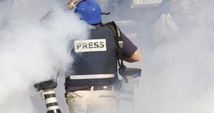
The government media office in Gaza said that the Israeli occupation forces deliberately targeted journalists during the recent protests held in Gaza in an attempt to prevent them from covering what was really happening.
In a statement on Saturday, the media office accused Israeli forces of firing live ammunition and tear gas grenades directly at journalists who were covering the border protests in Gaza on Friday and Saturday despite the clear and special signs referring to their job they were holding and their presence in spots relatively away from the participants in the protests.
The official also accused Israel of launching jamming attacks on telecommunication networks and media satellite communication vehicles during the protests, and hacking online pages and accounts belonging to journalists, especially those who were assigned to cover the recent events.
It stressed that such attacks on journalists were a new crime in Israel’s criminal record against freedoms of opinion and expression.
“It is not surprising to see those who kill unarmed civilians try to conceal their crime by attacking journalists who witness the event and relay it to the public opinion,” the office stated.
It called for forming an international inquiry commission to probe Israel’s growing violations and assaults on media crews in Palestine.
In a statement on Saturday, the media office accused Israeli forces of firing live ammunition and tear gas grenades directly at journalists who were covering the border protests in Gaza on Friday and Saturday despite the clear and special signs referring to their job they were holding and their presence in spots relatively away from the participants in the protests.
The official also accused Israel of launching jamming attacks on telecommunication networks and media satellite communication vehicles during the protests, and hacking online pages and accounts belonging to journalists, especially those who were assigned to cover the recent events.
It stressed that such attacks on journalists were a new crime in Israel’s criminal record against freedoms of opinion and expression.
“It is not surprising to see those who kill unarmed civilians try to conceal their crime by attacking journalists who witness the event and relay it to the public opinion,” the office stated.
It called for forming an international inquiry commission to probe Israel’s growing violations and assaults on media crews in Palestine.
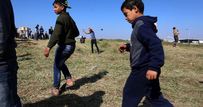
The European Union (EU) called for avoiding “the aggravation of violence in Gaza” after the Israeli killing of 15 Palestinians on Gaza border while targeting the great march of return last Friday.
Federica Mogherini, High Representative of the European Union for Foreign Affairs, said “The EU also calls for opening an independent inquiry into the use of weapon by Israeli army against Palestinians”.
The Israeli attack on the march of return has also led to the injury of 1500 Palestinians by Israeli snipers’ guns besides the killing of 15 others.
Federica Mogherini, High Representative of the European Union for Foreign Affairs, said “The EU also calls for opening an independent inquiry into the use of weapon by Israeli army against Palestinians”.
The Israeli attack on the march of return has also led to the injury of 1500 Palestinians by Israeli snipers’ guns besides the killing of 15 others.
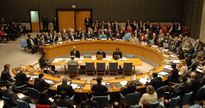
The US on Saturday foiled a draft statement submitted by Kuwait to the UN Security Council (UNSC) on the massacre committed by the Israeli occupation army against peaceful protesters in Gaza leaving at least 17 dead.
Al-Jazeera correspondent in New York said that the US raised objections to the draft statement proposed by Kuwait on behalf of Arab countries in the UNSC.
The correspondent added that Kuwait sought to obtain a statement from the UNSC during the consultations held on Friday evening but when the US objected that Kuwait called for an open session on Saturday.
He explained that the US objected to the Kuwait-drafted statement which was circulated during Saturday's open session though it did not include any condemnation of the killing of peaceful protesters who took part in Gaza's Great March of Return.
He pointed out that this is not the first time that Washington has prevented the UNSC from condemning Israel's crimes, saying that the US biased position has become more clear since the US ambassador to the UN Nikki Haley took office.
Kuwait's draft statement expressed grave concern over the situation at Gaza border, emphasized the right to peaceful protest and expressed sorrow at the loss of innocent Palestinian lives.
The statement called for an independent and transparent investigation into the massacre and urged respect for international human rights including protection of civilians.
The Palestinian Foreign Minister Riyad al-Maliki on Friday said that an emergency session of the UNSC had been called for to stop and condemn the Gaza massacre, while the Palestinian Authority President Mahmoud Abbas announced that he had asked the Palestinian ambassador to the UN Riyad Mansour to make the necessary measures to seek international protection for Palestinian protesters.
Al-Jazeera correspondent in New York said that the US raised objections to the draft statement proposed by Kuwait on behalf of Arab countries in the UNSC.
The correspondent added that Kuwait sought to obtain a statement from the UNSC during the consultations held on Friday evening but when the US objected that Kuwait called for an open session on Saturday.
He explained that the US objected to the Kuwait-drafted statement which was circulated during Saturday's open session though it did not include any condemnation of the killing of peaceful protesters who took part in Gaza's Great March of Return.
He pointed out that this is not the first time that Washington has prevented the UNSC from condemning Israel's crimes, saying that the US biased position has become more clear since the US ambassador to the UN Nikki Haley took office.
Kuwait's draft statement expressed grave concern over the situation at Gaza border, emphasized the right to peaceful protest and expressed sorrow at the loss of innocent Palestinian lives.
The statement called for an independent and transparent investigation into the massacre and urged respect for international human rights including protection of civilians.
The Palestinian Foreign Minister Riyad al-Maliki on Friday said that an emergency session of the UNSC had been called for to stop and condemn the Gaza massacre, while the Palestinian Authority President Mahmoud Abbas announced that he had asked the Palestinian ambassador to the UN Riyad Mansour to make the necessary measures to seek international protection for Palestinian protesters.
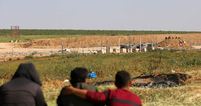
Two Palestinian human rights organizations on Saturday called on the Israeli occupation authorities to allow medical crews to safely evacuate two Palestinians who are still lying injured or dead near Gaza's eastern border fence.
Adalah and al-Mezan Centers for Human Rights in a statement asked senior Israeli officials to immediately allow search and rescue teams to enter the buffer zone in Gaza near the border fence to evacuate wounded or dead Palestinian men whose conditions remained unknown.
Local sources reported that two Palestinians were shot east of Juhor ad-Dik area in Gaza on Friday and left to bleed to death some 150 meters from the border fence before the Israeli occupation forces detained their bodies. Gaza's Ministry of Health has not confirmed the news of their death yet.
The statement said that the Israeli army uses live fire to prevent Palestinians from entering the "buffer zone" which extends 300 meters into Gaza.
The two human rights organizations stressed that the Israeli army, by preventing rescue teams from reaching those injured or dead, is violating both international humanitarian law and Israeli laws governing warfare anchored in the Geneva Conventions.
The statement underlined that providing protection to the injured as well as ambulances, hospitals and medical teams, allowing medical treatment and enabling rescue teams to evacuate casualties are among the basic principles of the Geneva Conventions.
Likewise, these laws guarantee the free movement of medical search and rescue teams which facilitates their mission to locate missing individuals, thus increasing their chances of survival, it added.
Adalah and al-Mezan Centers for Human Rights in a statement asked senior Israeli officials to immediately allow search and rescue teams to enter the buffer zone in Gaza near the border fence to evacuate wounded or dead Palestinian men whose conditions remained unknown.
Local sources reported that two Palestinians were shot east of Juhor ad-Dik area in Gaza on Friday and left to bleed to death some 150 meters from the border fence before the Israeli occupation forces detained their bodies. Gaza's Ministry of Health has not confirmed the news of their death yet.
The statement said that the Israeli army uses live fire to prevent Palestinians from entering the "buffer zone" which extends 300 meters into Gaza.
The two human rights organizations stressed that the Israeli army, by preventing rescue teams from reaching those injured or dead, is violating both international humanitarian law and Israeli laws governing warfare anchored in the Geneva Conventions.
The statement underlined that providing protection to the injured as well as ambulances, hospitals and medical teams, allowing medical treatment and enabling rescue teams to evacuate casualties are among the basic principles of the Geneva Conventions.
Likewise, these laws guarantee the free movement of medical search and rescue teams which facilitates their mission to locate missing individuals, thus increasing their chances of survival, it added.
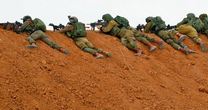
Leader of the British Labour Party Jeremy Corbyn has denounced Israel’s use of lethal force against Palestinian civilians who rallied last Friday in Gaza border areas to commemorate the Land Day.
“The killing and wounding by Israeli forces of civilians demonstrating for Palestinian rights in Gaza is appalling,” Corbyn said on his Twitter page on Saturday.
“The UK Government must make its voice heard on the urgency of a genuine settlement for peace and justice,” he added.
Thousands of Palestinians had marched to the Gaza border at the start of a six-week protest, dubbed the Great March of Return. The protest comes ahead of the 70th anniversary of the Palestinian "Nakba" (Catastrophe).
At least 15 Palestinians were killed and hundreds were wounded when Israeli soldiers cold-bloodedly opened fire at them.
The first to die was Omar Samour, a 27-year-old Palestinian farmer who was killed in Israeli shelling as he worked his land near Khan Younis early on Friday before the protests began.
Most of the other slain protesters, reported to be mainly men under 40, were shot dead at points along the length of the 65km (40-mile) fenced border, from Jabalia in the north to Rafah in the south.
“The killing and wounding by Israeli forces of civilians demonstrating for Palestinian rights in Gaza is appalling,” Corbyn said on his Twitter page on Saturday.
“The UK Government must make its voice heard on the urgency of a genuine settlement for peace and justice,” he added.
Thousands of Palestinians had marched to the Gaza border at the start of a six-week protest, dubbed the Great March of Return. The protest comes ahead of the 70th anniversary of the Palestinian "Nakba" (Catastrophe).
At least 15 Palestinians were killed and hundreds were wounded when Israeli soldiers cold-bloodedly opened fire at them.
The first to die was Omar Samour, a 27-year-old Palestinian farmer who was killed in Israeli shelling as he worked his land near Khan Younis early on Friday before the protests began.
Most of the other slain protesters, reported to be mainly men under 40, were shot dead at points along the length of the 65km (40-mile) fenced border, from Jabalia in the north to Rafah in the south.
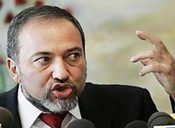
Israeli Defense Minister Avigdor Lieberman said, Sunday, that Israel will not hold any investigation, or cooperate with international inquiries, into the excessive use force against unarmed protesters in Gaza, Friday, leading to the death of sixteen Palestinians, in addition to hundreds of injuries.
Lieberman did not only refuse any investigation into the deadly Israeli military assault, but also said that Israel will not cooperate with any inquiry, including potential international investigation.
The Israeli official who lived in an colony in the occupied West Bank, even threatened stronger and more violent military measures against the Palestinian protesters, “especially if any of them try to cross the border fence.”
The Israeli official also echoed previous baseless allegations claiming that “%90 of the protesters, and their families, were paid by Hamas.”
He also attacked statements by the head of Meretz party Tamar Zandberg, who called on the army to investigate the excessive use of force and described the soldiers as trigger happy.
Furthermore, Lieberman said that Meretz Israeli left-wing party “represents the Palestinians, instead of serving Israel’s interests.”
Lieberman went on to claim that at least ten of the slain Palestinians were “members of Hamas,” and added that the soldiers “performed what was necessary and deserve a medal.”
He also alleged that Hamas “allotted 15 Million US Dollars for the processions,” and that “%90 of the protests were Hamas members, and their families, who are paid salaries.”
His statements came to justify the excessive use of force against nonviolent protesters, largely refugees displaced and expelled from their homes and lands when Israel was established in the historic Palestine in 1948.
The Palestinian Health Ministry in Gaza said the soldiers killed 16 Palestinians during the processions, and injured 1479 others, on Friday and Saturday.
It added that 805 of the wounded Palestinian were shot with live fire, 154 with rubber-coated steel bullets, 425 suffered the effects of teargas inhalation and 95 suffered burns, cuts and bruises.
In the morning to noon hours of Sunday, the soldiers injured more than 100 Palestinians, many of them with live fire, and the rest suffered the effects of teargas inhalation.
Lieberman did not only refuse any investigation into the deadly Israeli military assault, but also said that Israel will not cooperate with any inquiry, including potential international investigation.
The Israeli official who lived in an colony in the occupied West Bank, even threatened stronger and more violent military measures against the Palestinian protesters, “especially if any of them try to cross the border fence.”
The Israeli official also echoed previous baseless allegations claiming that “%90 of the protesters, and their families, were paid by Hamas.”
He also attacked statements by the head of Meretz party Tamar Zandberg, who called on the army to investigate the excessive use of force and described the soldiers as trigger happy.
Furthermore, Lieberman said that Meretz Israeli left-wing party “represents the Palestinians, instead of serving Israel’s interests.”
Lieberman went on to claim that at least ten of the slain Palestinians were “members of Hamas,” and added that the soldiers “performed what was necessary and deserve a medal.”
He also alleged that Hamas “allotted 15 Million US Dollars for the processions,” and that “%90 of the protests were Hamas members, and their families, who are paid salaries.”
His statements came to justify the excessive use of force against nonviolent protesters, largely refugees displaced and expelled from their homes and lands when Israel was established in the historic Palestine in 1948.
The Palestinian Health Ministry in Gaza said the soldiers killed 16 Palestinians during the processions, and injured 1479 others, on Friday and Saturday.
It added that 805 of the wounded Palestinian were shot with live fire, 154 with rubber-coated steel bullets, 425 suffered the effects of teargas inhalation and 95 suffered burns, cuts and bruises.
In the morning to noon hours of Sunday, the soldiers injured more than 100 Palestinians, many of them with live fire, and the rest suffered the effects of teargas inhalation.
31 mar 2018
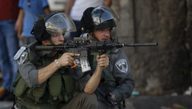
A Palestinian child was injured on Saturday, during confrontations with Israeli occupation forces in the village of Kafr Qaddoum, to the east of Qalqilia city in the West Bank, according to local WAFA sources.
Murad Shtewi, a local activist, said a rally set off in the village in condemnation of Israeli forces’ fatal shooting of 16 Palestinians in the Gaza Strip on Friday.
He said the soldiers attacked the protesters with rubber-coated steel rounds and teargas canisters, injuring 14-year-old Majdi Juma’a with a steel round in his back.
Murad Shtewi, a local activist, said a rally set off in the village in condemnation of Israeli forces’ fatal shooting of 16 Palestinians in the Gaza Strip on Friday.
He said the soldiers attacked the protesters with rubber-coated steel rounds and teargas canisters, injuring 14-year-old Majdi Juma’a with a steel round in his back.
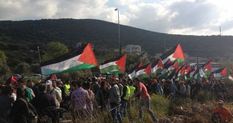
Hundreds of Palestinians were injured by the Israeli occupation forces (IOF) during the confrontations which broke out in different West Bank provinces in commemoration of the 42nd anniversary of Land Day and in support of the Great March of Return.
About 30 Palestinians suffered various injuries during violent clashes with the IOF in Huwara, Beita, Qusra and Kafr Qalil in Nablus.
Other clashes erupted in the villages of al-Mazra'a al-Gharbiya, Budrus, Beir Nidham and Biddu near Ramallah and at the northern entrance to al-Bireh where the IOF soldiers heavily fired live ammunition and teargas canisters at the peaceful protesters.
In a related context, unknown gunmen late Friday carried out an anti-occupation shooting attack at the illegal Israeli government of Ateret but no injuries were reported.
Several suffocation cases and injuries were reported during clashes in al-Khalil. A number of Palestinians were arrested at the same time by the IOF at a military checkpoint near the Ibrahimi Mosque and transferred to an unknown destination.
Similar confrontations were witnessed in Bethlehem and Jericho where the IOF soldiers heavily fired live ammunition, rubber-coated metal bullets and teargas canisters at the protesting youths.
About 30 Palestinians suffered various injuries during violent clashes with the IOF in Huwara, Beita, Qusra and Kafr Qalil in Nablus.
Other clashes erupted in the villages of al-Mazra'a al-Gharbiya, Budrus, Beir Nidham and Biddu near Ramallah and at the northern entrance to al-Bireh where the IOF soldiers heavily fired live ammunition and teargas canisters at the peaceful protesters.
In a related context, unknown gunmen late Friday carried out an anti-occupation shooting attack at the illegal Israeli government of Ateret but no injuries were reported.
Several suffocation cases and injuries were reported during clashes in al-Khalil. A number of Palestinians were arrested at the same time by the IOF at a military checkpoint near the Ibrahimi Mosque and transferred to an unknown destination.
Similar confrontations were witnessed in Bethlehem and Jericho where the IOF soldiers heavily fired live ammunition, rubber-coated metal bullets and teargas canisters at the protesting youths.
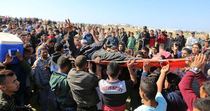
On the second day of the great massive march of return, 25 Palestinians on Saturday evening were shot and injured by Israeli gunfire while quelling the peaceful march east of Gaza Strip.
The spokesman of Health Ministry in Gaza, Ashraf al-Qudra, said that the wounded were transferred to local hospitals as they were moderately injured.
He elaborated that 5 of the injuries occurred east of Jablaya, 13 east of Gaza, 2 east of al-Buraij and 5 others east of Rafah. Dozens of other cases were treated in the field, he pointed out.
Some 15 Palestinians were killed on Friday by Israeli forces and 1500 others were shot and injured during participation in the first day of the massive march of return held along Gaza borderline.
The spokesman of Health Ministry in Gaza, Ashraf al-Qudra, said that the wounded were transferred to local hospitals as they were moderately injured.
He elaborated that 5 of the injuries occurred east of Jablaya, 13 east of Gaza, 2 east of al-Buraij and 5 others east of Rafah. Dozens of other cases were treated in the field, he pointed out.
Some 15 Palestinians were killed on Friday by Israeli forces and 1500 others were shot and injured during participation in the first day of the massive march of return held along Gaza borderline.
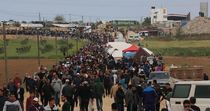
Hundreds of Palestinian refugees and supporters of the Palestinian cause took to the streets in Lebanon Saturday to participate in protests marking Land Day and supporting the Great March of Return.
Palestinian factions and Lebanese national forces in Tyre and Sidon called for mass demonstrations in support of the Palestinian refugees' right of return.
Other protests and sit-ins were organized in the refugee camps of Ain al-Hilweh, Miye ou Miye, Bourj el-Barajneh, Shatila, Nahr al-Bared and Beddawi where Palestinian flags were raised and slogans expressing support of the Palestinian cause were chanted.
The participants affirmed that the battle against the Israeli occupation will continue until the Palestinians are able to restore their lands and obtain their legitimate rights including their right of return.
Palestinian factions and Lebanese national forces in Tyre and Sidon called for mass demonstrations in support of the Palestinian refugees' right of return.
Other protests and sit-ins were organized in the refugee camps of Ain al-Hilweh, Miye ou Miye, Bourj el-Barajneh, Shatila, Nahr al-Bared and Beddawi where Palestinian flags were raised and slogans expressing support of the Palestinian cause were chanted.
The participants affirmed that the battle against the Israeli occupation will continue until the Palestinians are able to restore their lands and obtain their legitimate rights including their right of return.

The Palestinian Center for Human Rights (PCHR) said that there was a political decision at the highest political level in Israel to use excessive force to suppress hundreds of thousands of civilians participating in fully peaceful protests, which were held on Friday within hundreds of meters away from the border fence with Israel.
In a report released on Saturday, PCHR affirmed that Israeli forces directly targeted protesters with no justification and without the latter posing threat or danger to life of soldiers.
According to observations by PCHR fieldworkers, dozens of Israeli snipers stationed behind mounds of dirt along the border fence, east of the Gaza Strip, sporadically and deliberately opened fire at the participants in the peaceful assemblies that included hundreds of thousands of civilians and concentrated in five areas in eastern Gaza. As a result, civilians were directly killed or wounded.
The observations of PCHR fieldworkers revealed that the Israeli forces focused on targeting the participants in the back rows of the demonstration as they were falling one by one around 300 meters away from the border fence in addition to others who attempted in a few numbers to approach the fence. This proves that there is an official decision to kill and cause bodily harm to the demonstrators, in conformity with the policy of intimidation adopted by the Israeli forces, spokespersons, and officials during the past few days to reduce the public participation.
According to the center’s investigations, on Friday early morning, 30 March 2018, tens of thousands of civilians, including women and children, within entire families started swarming to five camps established by the higher national authority for organizing the march of return and breaking siege in eastern Rafah City, Khuza’a in Khan Younis, al-Bureij in central Gaza; Shuja’iyya neighborhood in Gaza City; and eastern Jabalia in northern Gaza.
Israeli forces early started to target the assemblies, which were fully peaceful, inflicting dozens of casualties.
Following the Friday prayer, the number of participants in the five assemblies increased, reaching to hundreds of thousands of men, elderlies, women and children. They were standing dozens to hundreds meters away from the border fence and raising the Palestinian flags, while only a few numbers of them attempted to approach the border fence in order to throw stones and raise flags.
The Israeli forces fired live bullets at the protesters. As a result, until 17:00 pm on Friday, eight protesters were killed, including two in eastern Jabalia, four in eastern Gaza City and two in eastern Rafah. All of them were hit in the upper part of the body, head, chest and abdomen.
Moreover, 708 civilians were wounded, including 121 children, 26 women and one journalist, in addition to hundreds who suffered from tear gas inhalation after tear gas canisters were heavily fired by soldiers stationed along the border fence and by drones hovering over the protesters.
The report noted that the soldiers kept targeting the protesters after the death of those eight civilians, which led to an increase in victims’ number.
At approximately 04:30 pm, Israeli forces fired two artillery shells at two civilians who were collecting parcel from an agricultural land around 1,000 meters away from the border fence with Israel, east of al-Qararah. As a result, one of them, namely Omer Wahid Abu Sammour, 27, was killed and arrived pieces at the Gaza European Hospital while the other sustained moderate wounds. Both civilians had to wait half an hour in the scene until the medical crews could have access and take them to the hospital.
This huge number of victims proves that the Israeli forces, at the behest of their government, continue to commit further crimes and use excessive force against Palestinian civilians in disregard for their lives.
PCHR expressed its condemnation of this new massacre committed by the Israeli forces that resulted in this huge number of causalities, stressing it was as a result of the international community’s silence on Israel’s persistent crimes against the Palestinian people.
In a report released on Saturday, PCHR affirmed that Israeli forces directly targeted protesters with no justification and without the latter posing threat or danger to life of soldiers.
According to observations by PCHR fieldworkers, dozens of Israeli snipers stationed behind mounds of dirt along the border fence, east of the Gaza Strip, sporadically and deliberately opened fire at the participants in the peaceful assemblies that included hundreds of thousands of civilians and concentrated in five areas in eastern Gaza. As a result, civilians were directly killed or wounded.
The observations of PCHR fieldworkers revealed that the Israeli forces focused on targeting the participants in the back rows of the demonstration as they were falling one by one around 300 meters away from the border fence in addition to others who attempted in a few numbers to approach the fence. This proves that there is an official decision to kill and cause bodily harm to the demonstrators, in conformity with the policy of intimidation adopted by the Israeli forces, spokespersons, and officials during the past few days to reduce the public participation.
According to the center’s investigations, on Friday early morning, 30 March 2018, tens of thousands of civilians, including women and children, within entire families started swarming to five camps established by the higher national authority for organizing the march of return and breaking siege in eastern Rafah City, Khuza’a in Khan Younis, al-Bureij in central Gaza; Shuja’iyya neighborhood in Gaza City; and eastern Jabalia in northern Gaza.
Israeli forces early started to target the assemblies, which were fully peaceful, inflicting dozens of casualties.
Following the Friday prayer, the number of participants in the five assemblies increased, reaching to hundreds of thousands of men, elderlies, women and children. They were standing dozens to hundreds meters away from the border fence and raising the Palestinian flags, while only a few numbers of them attempted to approach the border fence in order to throw stones and raise flags.
The Israeli forces fired live bullets at the protesters. As a result, until 17:00 pm on Friday, eight protesters were killed, including two in eastern Jabalia, four in eastern Gaza City and two in eastern Rafah. All of them were hit in the upper part of the body, head, chest and abdomen.
Moreover, 708 civilians were wounded, including 121 children, 26 women and one journalist, in addition to hundreds who suffered from tear gas inhalation after tear gas canisters were heavily fired by soldiers stationed along the border fence and by drones hovering over the protesters.
The report noted that the soldiers kept targeting the protesters after the death of those eight civilians, which led to an increase in victims’ number.
At approximately 04:30 pm, Israeli forces fired two artillery shells at two civilians who were collecting parcel from an agricultural land around 1,000 meters away from the border fence with Israel, east of al-Qararah. As a result, one of them, namely Omer Wahid Abu Sammour, 27, was killed and arrived pieces at the Gaza European Hospital while the other sustained moderate wounds. Both civilians had to wait half an hour in the scene until the medical crews could have access and take them to the hospital.
This huge number of victims proves that the Israeli forces, at the behest of their government, continue to commit further crimes and use excessive force against Palestinian civilians in disregard for their lives.
PCHR expressed its condemnation of this new massacre committed by the Israeli forces that resulted in this huge number of causalities, stressing it was as a result of the international community’s silence on Israel’s persistent crimes against the Palestinian people.

The UN secretary-general, Antonio Guterres, has called for an independent and transparent investigation into the death of at least 15 Palestinian protesters in Gaza during border rallies held on Friday in the besieged Gaza Strip.
A statement issued by a UN spokesman said the secretary-general is deeply concerned by the reports of the deadly clashes and appeals to those concerned to refrain from any act that could lead to further casualties, particularly measures that could place civilians in harm’s way.
The UN Security Council on Friday failed to decide on taking any action or releasing a joint statement after an emergency meeting on Friday evening. Kuwait convened it hours after the bloodiest day in Gaza since Israel’s 2014 war.
15 people were killed and more than 750 wounded by Israeli gunfire as thousands of Palestinian protesters marched to Gaza’s border with Israel and clashed with soldiers on the Land Day.
During the Security Council session, Taye-Brook Zerihoun, the deputy UN political affairs chief, warned that the situation might deteriorate in the coming days, stressing that the UN would continue to stress that civilians should not be targeted and that all actors refrain from putting children at risk.
He also called on Israel to uphold its responsibilities under international law, emphasizing that lethal force should only be used as a last resort, with any resulting fatalities properly investigated by the authorities.
A statement issued by a UN spokesman said the secretary-general is deeply concerned by the reports of the deadly clashes and appeals to those concerned to refrain from any act that could lead to further casualties, particularly measures that could place civilians in harm’s way.
The UN Security Council on Friday failed to decide on taking any action or releasing a joint statement after an emergency meeting on Friday evening. Kuwait convened it hours after the bloodiest day in Gaza since Israel’s 2014 war.
15 people were killed and more than 750 wounded by Israeli gunfire as thousands of Palestinian protesters marched to Gaza’s border with Israel and clashed with soldiers on the Land Day.
During the Security Council session, Taye-Brook Zerihoun, the deputy UN political affairs chief, warned that the situation might deteriorate in the coming days, stressing that the UN would continue to stress that civilians should not be targeted and that all actors refrain from putting children at risk.
He also called on Israel to uphold its responsibilities under international law, emphasizing that lethal force should only be used as a last resort, with any resulting fatalities properly investigated by the authorities.
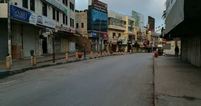
A general strike was declared on Saturday morning in the West Bank and Gaza in mourning for 15 Palestinian protesters killed by Israeli soldiers during their participation in the March of Return rallies that was held in different border areas of the impoverished Gaza Strip on Friday.
Reporters for the Palestinian Information Center (PIC) said the strike action disrupted traffic and services in all areas of the West Bank and Gaza after businesses and educational institutions, in particular, closed their doors. Drivers of public vehicles also joined the strike.
Meanwhile, Palestinian activists in Nablus called on citizens to participate in the march to be staged on Saturday afternoon from outside al-Haj Namer Mosque in the city to the central district.
Palestinian factions called for a day of strike and anger in the face of the Israeli occupation, whose soldiers committed a massacre against peaceful protesters in Gaza on Friday.
Reporters for the Palestinian Information Center (PIC) said the strike action disrupted traffic and services in all areas of the West Bank and Gaza after businesses and educational institutions, in particular, closed their doors. Drivers of public vehicles also joined the strike.
Meanwhile, Palestinian activists in Nablus called on citizens to participate in the march to be staged on Saturday afternoon from outside al-Haj Namer Mosque in the city to the central district.
Palestinian factions called for a day of strike and anger in the face of the Israeli occupation, whose soldiers committed a massacre against peaceful protesters in Gaza on Friday.
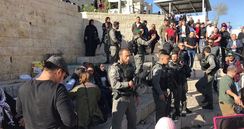
Great March of Return's coordination committee on Friday said that the Israeli occupation forces' (IOF) use of lethal force against the unarmed civilians participating in Gaza's March of Return is a crime against humanity.
The coordination committee said in a statement that the IOF violent practices blatantly violate the 1949 Fourth Geneva Convention on the protection of civilians under occupation.
The statement said that the excessive use of lethal force against unarmed protesters in Gaza based on instructions by senior Israeli leaders indicates that Israel does not respect international humanitarian law.
Israel's War Minister Avigdor Lieberman on Friday said that hundreds of snipers will be stationed a few meters away of the protesters to immediately shoot any Palestinian who tries to cross the border fence.
This was followed by another statement by the chief of general staff of the Israeli army Gadi Eizenkot in which he said that he will personally supervise the quelling of the March of Return and threatened to use live ammunition to disperse demonstrators.
The coordination committee added that the IOF should not in any case shoot at unarmed civilians who do not use violence or pose any threat. Terms like "self-defense" and "protecting Israel's sovereignty" are not acceptable justifications for belittling the lives of Palestinians, it noted.
It affirmed that the Great March of Return is a popular event based on the human right to peaceful protest and the UN General Assembly Resolution 149 which provides for the return of Palestinian refugees to their lands from which they were expelled in 1948.
It called on the Palestine Liberation Organization, the Palestinian Authority, and international organizations, especially the UN, to shoulder their responsibilities on the diplomatic, political and legal levels to stop Israel's grave violations against defenseless civilians.
The committee stressed that Israel will not succeed in terrorizing the Palestinians people who will resume their peaceful protests until they achieve their goal.
The committee concluded its statement by praising the crowds in the Palestinian territories, especially the Gaza Strip, and abroad who took part in the Great March of Return activities.
The coordination committee said in a statement that the IOF violent practices blatantly violate the 1949 Fourth Geneva Convention on the protection of civilians under occupation.
The statement said that the excessive use of lethal force against unarmed protesters in Gaza based on instructions by senior Israeli leaders indicates that Israel does not respect international humanitarian law.
Israel's War Minister Avigdor Lieberman on Friday said that hundreds of snipers will be stationed a few meters away of the protesters to immediately shoot any Palestinian who tries to cross the border fence.
This was followed by another statement by the chief of general staff of the Israeli army Gadi Eizenkot in which he said that he will personally supervise the quelling of the March of Return and threatened to use live ammunition to disperse demonstrators.
The coordination committee added that the IOF should not in any case shoot at unarmed civilians who do not use violence or pose any threat. Terms like "self-defense" and "protecting Israel's sovereignty" are not acceptable justifications for belittling the lives of Palestinians, it noted.
It affirmed that the Great March of Return is a popular event based on the human right to peaceful protest and the UN General Assembly Resolution 149 which provides for the return of Palestinian refugees to their lands from which they were expelled in 1948.
It called on the Palestine Liberation Organization, the Palestinian Authority, and international organizations, especially the UN, to shoulder their responsibilities on the diplomatic, political and legal levels to stop Israel's grave violations against defenseless civilians.
The committee stressed that Israel will not succeed in terrorizing the Palestinians people who will resume their peaceful protests until they achieve their goal.
The committee concluded its statement by praising the crowds in the Palestinian territories, especially the Gaza Strip, and abroad who took part in the Great March of Return activities.
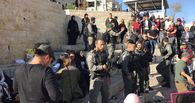
Israeli forces on Saturday evening quelled a sit-in staged by Jerusalemite activists in protest at the Israeli attack on Gaza Strip during the great return march on Friday.
Dozens of protesters, who were gathered at Bab al-Amoud area in the Old City of Occupied Jerusalem, chanted slogans against the Israeli occupation while carrying the Palestinian flag.
Eyewitness said that Israeli forces assaulted the Palestinians who took part in the anti-occupation event.
Some 15 Palestinians were killed and 1500 others were shot and injured on Friday by Israeli forces during participation in the first day of the massive march of return held along Gaza borderline.
Dozens of protesters, who were gathered at Bab al-Amoud area in the Old City of Occupied Jerusalem, chanted slogans against the Israeli occupation while carrying the Palestinian flag.
Eyewitness said that Israeli forces assaulted the Palestinians who took part in the anti-occupation event.
Some 15 Palestinians were killed and 1500 others were shot and injured on Friday by Israeli forces during participation in the first day of the massive march of return held along Gaza borderline.
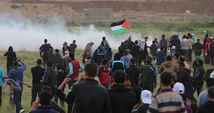
Israeli occupation forces (IOF) on Saturday opened machinegun fire towards al-Awdah camp east of Jablaya town in the northern Gaza Strip. A number of injuries were reported.
Local sources told Quds Press that thousands of Palestinians returned to al-Awdah camps pitched in 6 sites along the borderline east of Gaza.
The sources pointed out that injuries were reported among Palestinian youths. However, it was not announced officially by the Palestinian health ministry.
Some 15 Palestinians were killed and 1500 others were shot and injured by Israeli forces during their participation in the great march of return held along the Gaza borderline area on Friday.
Local sources told Quds Press that thousands of Palestinians returned to al-Awdah camps pitched in 6 sites along the borderline east of Gaza.
The sources pointed out that injuries were reported among Palestinian youths. However, it was not announced officially by the Palestinian health ministry.
Some 15 Palestinians were killed and 1500 others were shot and injured by Israeli forces during their participation in the great march of return held along the Gaza borderline area on Friday.
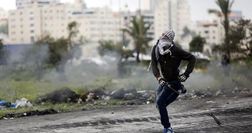
Clashes broke out on Saturday afternoon between Palestinian youths and Israeli occupation forces (IOF) at Bab al-Zawiya square in al-Khalil city.
The PIC reporter said that some outraged youths attacked the IOF military watchtower in the area with stones and empty bottles. However, IOF soldiers replied by showering the protesters with gunfire and tear gas grenades with no injuries reported.
A general strike has prevailed in al-Khalil governorate in mourning for the martyrs who fell in Gaza Strip in IOF shooting at the peaceful demonstrations near the borders with 1948 occupied Palestine on Friday, amid a state of tension and alert in the governorate.
The PIC reporter said that some outraged youths attacked the IOF military watchtower in the area with stones and empty bottles. However, IOF soldiers replied by showering the protesters with gunfire and tear gas grenades with no injuries reported.
A general strike has prevailed in al-Khalil governorate in mourning for the martyrs who fell in Gaza Strip in IOF shooting at the peaceful demonstrations near the borders with 1948 occupied Palestine on Friday, amid a state of tension and alert in the governorate.
